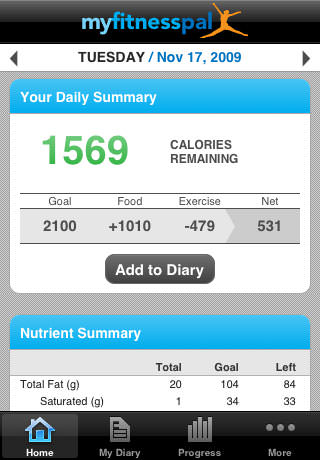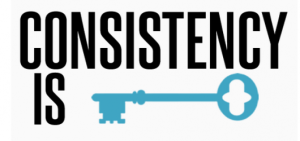I wanted to put together a short list of common things that may be wreaking havok on the average ketogenic dieter, and go over some solutions that might help out. Keep in mind, this does not cover everything and it also covers a wide range of topics.
As you read this, please read to the end. Don’t form ideas about your own body and apply the things that I am saying with no thought behind it.
This is strictly for people that are hitting weight loss plateau’s and need some help. If you have only lost 1 or 2 pounds in a week, that is still weight loss and does not require action against it.
Hidden Carbohydrates
People on ketogenic diets eat more carbohydrates than they think. They’re hidden in vegetables, nuts, and certain meat products. Yes, that peanut butter you’re chomping on could be causing a problem! Especially if it’s store bought – that stuff is loaded with extra sugar.Some vegetables like Brussels sprouts, broccoli, and squash are common culprits that find their way into our lives on a frequent basis. You might think that they’re low carb, but in large consumption, those carbs really do add up. You can look at the list of the best low carb vegetables we’ve put together, so that you can be more aware of the vegetables you eat.
Meat is the center of most of our lives, and there’s sugar everywhere you look. Some bacon is honey smoked, adding unnecessary carbs to an already delicious product. Why the madness? Look for bacon with no sugar added. When you start to look into Italian sausages, chorizo, and canned meats, there’s more carbs than most think. Some brands have up to 5g carbs per serving when it comes to sausage – so make sure you are being diligent.
Medicine. Seriously!? Next time you think you are breaking down with a cold or flu, take a look at the nutritional information on the back of that Dayquil. 2 tablespoons of the stuff has a whopping 19g of carbs. You should opt for the low-sugar or sugar-free varieties they now offer for diabetics.
Make sure you check the nutrition labels on everything, before you buy it! You have to be weary of all the extra carbs that are hidden in the products you buy. We put together a ketogenic diet food list that you can read through before you plan your next shopping trip.
Calorie Counting
Most people I talk to have a misconception about
ketogenic diets. They get the idea that all they have to do is count
carbs to lose weight, and that’s simply not true.
Think of it as a mathematical formula, instead. If you are putting
more calories into your body than you are burning, that gives you excess
calories. Do you think those excess calories just disappear? No, they
are stored. Keep in mind that we eat a lot of calories from fat. This is
because it’s the highest calorie per unit of nutrient, at 9 calories per 1g.
The misconception comes about because this large amount of fat also offers a great satiated feeling, allowing us to be full for a very long time. Most people don’t hit their necessary calories for the day, leaving them in a calorie deficit – and able to lose weight.
Making sure you’re in a calorie deficit is very important, and allows you to lose weight. You can use the keto calculator to help you figure out your macros, if you’re having trouble.
The misconception comes about because this large amount of fat also offers a great satiated feeling, allowing us to be full for a very long time. Most people don’t hit their necessary calories for the day, leaving them in a calorie deficit – and able to lose weight.
Making sure you’re in a calorie deficit is very important, and allows you to lose weight. You can use the keto calculator to help you figure out your macros, if you’re having trouble.

Food Sensitivity
Some people find themselves following their daily macros perfectly, but still seem to hit a stall. That might mean they have sensitivity to certain types of food.From what I’ve come across, many people seem to have sensitivity to dairy. That includes cheese – one of the staples in all of my meals. That also includes cream, butter, and yogurt. If you’re having trouble losing weight, try cutting these out of your diet for a few weeks to see where it takes you.
Gluten is also something that many people have food sensitivities to. For some, low carb pastas and protein bars are a great way to keep weight loss slowed. Low carb processed foods can also have gluten in them. Yes, that means the lovely low-carb tortillas you’ve been eating might actually be stalling your weight loss.
If this sounds like you, cutting out gluten intake from processed foods might help out. It might also have a huge impact on your health over time.
Staying Consistent

Being consistent with a ketogenic diet is
extremely important. Being as it can take a few days for your body to
become keto-adapted, a cheat day can really take a long time to recover
from. By the time your body is back in ketosis, a week may have passed –
and that’s a week of no fat burning. This is also where the dreaded
water weight will come back on.
If you are weighing yourself on a weekly basis, you may see a 4-6 pound gain
of water weight if you did a cheat day 5 or 6 days ago. It also means
it will take a few more days for the weight loss to start again. What
may seem like a weight loss plateau is really just a delay from your
body trying to become keto-adapted again.Tracking your daily macros is a great way to keep consistent. It adds a layer of strictness into your diet, making it easier over time to realize where the mistakes are. We use MyFitnessPal, and wrote an article to help you get it set up.
If you’re not tracking your carbs, it can be very easy to let those hidden carbs creep up on you and knock you out of ketosis.
Protein Intake
Too much excess protein is just a bad thing when you’re in ketosis. As mentioned in a previous article, up to 56% of the excess protein is broken down into glucose. We all know that the body loves to use glucose as the primary form of fuel, and that’s exactly what we don’t want it to do.The body and brain need small amounts of glucose to survive. The liver will always make sure you get this glucose, and it will strip it from your muscle tissues if necessary. Eating protein allows your body to get enough glucose needed to perform as needed, but it will also allow your muscle retention to stay healthy.
If you exercise, protein levels should be hovering around 0.8g – 1.0g protein per lean pound of body mass a day (source). This helps with muscle mass retention and growth.
However, if you are not exercising – your protein intake should not be as high. Sitting around 0.6g – 0.8g of protein per lean pound of body mass is going to be fine (source).
Eating Too Little or Exercising Too Much
This can slow your metabolism down. The body will slow itself down in response to a lack of food or excessive amounts of exercise to conserve itself. Studies show that if you do aerobic exercise for more than 1 hour a day, your metabolic rate can drop by as much as 15%.In addition, eating too little can have the same effect. If you are eating too little, so much so that your fat stores cannot cover your calorie deficit, your body will begin to use lean mass to get the energy that it needs. This study shows that over a 6 month period of a 25% calorie deficit, your metabolic rate will only drop about 6%.
Studies show that as long as you’re eating at enough of a deficit that your fat stores can cover, your metabolic rate doesn’t change too much. If you do go over that deficit, though, your metabolic rate will severely drop in order to protect vital organs (this is a real “starvation mode” response from your body).
So, how much can your fat stores actually cover? You can get about 31.4 calories per pound of fat per day, from your fat stores.
Let’s say you’re 240 lbs (162 lbs lean mass, 78 lbs fat, 31.2% body fat) and want to get down to 180 lbs (162 lb lean mass, 18 lbs fat, 10% body fat):
- At 240 lbs (162 lean mass, 78 lbs fat) you can get about 2449 calories from fat stores.
- At 220 lbs (162 lean mass , 58 lbs fat) you can get about 1821 calories from fat stores.
- At 200 lbs (162 lean mass, 38 lbs fat) you can get about 1193 calories from fat stores.
- At 180 lbs (162 lean mass, 18 lbs fat) you can get about 565 calories from fat stores.
Eating Too Often
Snacking when you’re hungry is great, but it can
also be a setback. Try restricting yourself to eat on a regular
schedule, with no meals (however small) in between. This is similar to intermittent fasting, and works very well for some people.
Intermittent Fasting will allow your blood sugar and insulin to drop
down to baseline levels, and allow your body to go into its fasting
state – where it will burn fat for fuel.

Fat Fasting
If you’re finding yourself still at a plateau, you can apply a technique called the fat fast. It is normally a 3 day window of low caloric intake and high amounts of fat to kickstart your body to use your stored fat as fuel. If you’re interested, I went into more detail on fat fasting in another post.This will consist of:
- 1000 – 1200 calories a day.
- 80-90% calories from fat.
- Eating 4-5 times a day.
No comments:
Post a Comment